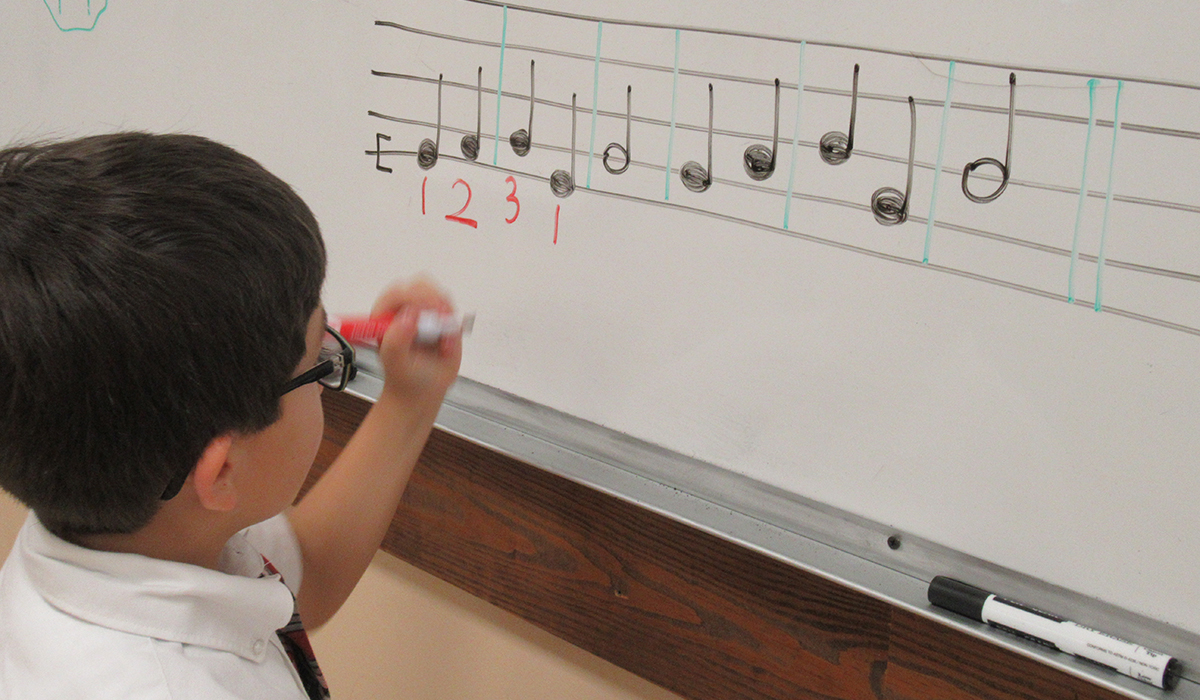The Ward Method is admirably suited to meet the needs of both the National Standards for Music Education of 1994 as well as the 2014 standards. Ward Method students are easily able, even in the early grades, to create, perform and respond to music.
The Ward Method in Relation to National Standards for Music Education
In 1994 MENC: The National Association for Music Education, set nine voluntary content standards as the National Standards for Music Education. These standards are as follows:
- Singing, alone and with others, a varied repertoire of music.
From the beginning Ward students are required to sing alone and with others as they practice matching pitch and singing in various scales and modes. - Performing on instruments, alone and with others, a varied repertoire of music.
The Ward Method primarily uses vocal instruction. However, the knowledge the students receive can easily be applied in the classroom with recorders or by the students themselves in private instrumental lessons. The simple melodies learned in early grades constitute a varied and easy repertoire for recorder and other instruments. - Improvising melodies, variations, and accompaniments.
Through a variety of creative activities the students learn to improvise melodies and variations. - Composing and arranging music within specified guidelines.
From their earliest experiences in Ward, students learn how to compose and arrange music following specific patterns and later specific musical form. - Reading and notating music.
At every level of the Ward Method, students are taught to sight-read music, first using number notation and solfege, then the Gregorian do clef followed by treble and bass clef. Students notate rhythmic dictations to visibly express the rhythmic movement of melodies. - Listening to, analyzing and describing music.
As students encounter musical ideas, they are also given the musical terminology to describe their compositions and those of others. - Evaluating music and music performances.
Using stated guidelines, students evaluate each other’s musical compositions and learn why one melody may be more expressive than another and how the music is best performed. - Understanding relationships between music, the other arts, and disciplines outside the arts.
Concepts of melody, rhythm, arsis and thesis developed in the Ward Method can be applied to all forms of music, dance and movement. Composing songs to specific texts connects students to the field of literature. Their study of liturgical music connects to theology. - Understanding music in relation to history and culture.
Singing a repertoire which ranges from Gregorian chant, simple folk songs, a Bach chorale to modern liturgical music allows students to understand music in relation to history and culture.
In 2014 these nine standards were updated to emphasize the three Artistic Processes of Creating, Performing and Responding.
- Students need to have experience in creating, to be successful musicians and to be successful 21st century citizens.
- Students need to perform - as singers, as instrumentalists, and in their lives and careers.
- Students need to respond to music, as well as to their culture, their community, and their colleagues.
The 2014 standards are tailored to the individual needs of each class pre-K through grade 8, as well as standard high-school music classes.
https://nafme.org/wp-content/files/2014/11/2014-Music-Standards-PK-8-Strand.pdf

